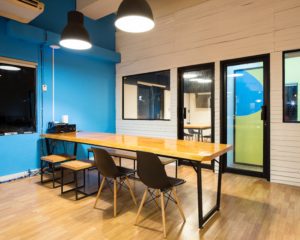Should You Creating Zoning Systems for your Commercial HVAC?
A Zoned Indoor HVAC System Isn’t for Every Business. But It Might Just Be for Yours.

We’ve talked in this space about the slings and arrows of indoor temperature management in a commercial building, how one person’s “perfect temp” is another person’s “arctic hell.” It can be difficult to resolve these differences without leaving one group unhappy at least part of the time.
Zoning systems can change the game. With thermostats placed strategically throughout your commercial space, these zoned rooms, offices or spaces can provide microclimates separately controlled from one another. While your receptionist may enjoy his first floor welcoming area warm and toasty, your accounts manager and her team can keep it as frosty as they’d like on the third floor.
Sounds great, doesn’t it? But is this system really for you? The answer is: it depends. First, let’s review how these actually work. Zoning systems start with zone dampers. Also known as a volume control damper (or VCD, if you want to impress HVAC professionals at a holiday party), this is a mechanism used to direct airflow within a commercial HVAC system. In zoning systems, these dampers are placed within the ductwork to connect to an individual thermostat (or thermostats within a particular zone). When the cool cucumbers on the third floor want freezing cold temperatures to work on their latest presentation, the heat surrounding our cozy (and warm-blooded) receptionist on the first floor will not be affected, as his thermostat will signal to the other damper to close, sending all the hot air to his floor alone.
From a cost perspective, this kind of set-up, as you might imagine, saves a great deal of energy as well. You won’t be heating or cooling the conference room that no one is using, while keeping the employees occupying the far corner of the building comfortable. You’ll also notice your energy bills are lower. Tenants and employees are happier, as they can control their own working environment more effectively, thus translating into greater productivity. And the icing on the cake? Since your HVAC system isn’t working as hard to cool and heat the entire building at the same temps all the time, it will last longer, too.
The caveat? Size is an issue. Zoning systems can work for small or large spaces, but their placement needs to be well-thought out first. You’ll also want to inspect your existing system, and see where these dampers might work best. Nevertheless, with big possible benefits and utility cost savings, it’s definitely worth your time to explore.
Get the maximum performance from your commercial HVAC system. Call Air-Tro today to discover new ways to save without sacrificing indoor comfort! (626) 357-3535.
